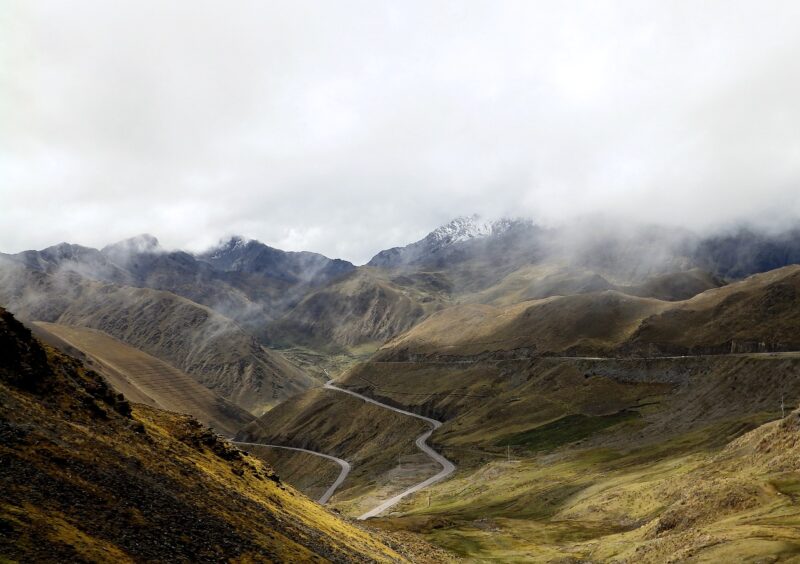The Most Mind-Blowing Scientific Discoveries That Almost Didn’t Happen
November 18, 2024

Science is often portrayed as a linear journey of discovery, where brilliant minds build upon each other’s work to achieve breakthroughs and advancements. Yet, reality often tells a different story—that of missed opportunities, accidents, and unpredictabilities that played instrumental roles in shaping the scientific landscape we know today. In this intricate narrative, we uncover those remarkable instances where pivotal discoveries almost slipped through the cracks, highlighting the fragility of human endeavor.
1. Penicillin: The Accidental Revolution
Penicillin, one of the greatest medical discoveries of the 20th century, was found by accident when Alexander Fleming noticed that a mold growing in a petri dish had killed surrounding bacteria. In 1928, Fleming was experimenting with staphylococci when he returned from vacation to find that some of his cultures had been contaminated with a blue-green mold known as Penicillium notatum.
However, this discovery almost didn’t happen. It took years for Fleming’s findings to gain widespread acceptance and to lead to the development of penicillin as a lifesaving antibiotic during World War II. Without Fleming’s curiosity and the fortunate timing of his serendipitous discovery, countless lives would have been lost to bacterial infections.
2. The Structure of DNA: An Unfortunate Misplacement
The comprehension of the double helix structure of DNA is attributed to James Watson and Francis Crick, who pieced together critical insights from their predecessors. Yet, it was the x-ray diffraction images produced by Rosalind Franklin that provided the evidence needed to confirm their model.
Franklin’s work was almost overshadowed in the competitive scientific atmosphere of the time. A misplacement of her data—an x-ray photograph famously known as Photograph 51—could have had dire consequences for Watson and Crick’s assertions. Fortunately, they had the good fortune to come across her work, leading to their groundbreaking paper published in 1953. Had her work not been rediscovered, the complete understanding of genetics might have evolved at a significantly slower rate.
Vulcan: The Planet That Wasn’t
In the world of astronomy, the hypothetical planet Vulcan was proposed in the 19th century to explain peculiarities in Mercury’s orbit. Some astronomers claimed to have observed Vulcan; however, no physical evidence of its existence was ever found. The idea behind Vulcan was so compelling that many scientists dedicated significant resources and efforts to search for it.
The final nail in Vulcan’s coffin came in 1915, when Albert Einstein published his theory of general relativity, which elegantly explained the unusual orbit of Mercury without the need for an additional planet. If scientific inertia had favored continued belief in Vulcan without embracing Einstein’s revolutionary ideas, we would be left with an incorrect model of celestial mechanics today.
Radiation: Marie Curie’s Reluctance
Marie Curie, a pioneering physicist and chemist, discovered the elements polonium and radium through her research on radioactivity. However, Curie was initially hesitant about the implications of her discoveries and the potential dangers associated with radiation. In fact, she did not advocate for its application in medicine until much later, demonstrating significant caution about the technology she helped pioneer.
Had her hesitance continued, the field of radiation therapy for cancer might have seen considerable delays. Instead, her cautious approach eventually led to the responsible use of radiation in medical treatments and diagnostics, offering invaluable support to patients suffering from cancer and other diseases.
The Theory of Plate Tectonics: A Slow Realization
The foundation of modern geology rests upon the theory of plate tectonics; however, its acceptance was a long and arduous process. Alfred Wegener first introduced the idea of continental drift in the early 20th century, indicating that continents were once joined together and have since drifted apart. Despite its revolutionary implications, Wegener faced significant skepticism from the scientific community, and his ideas were largely dismissed.
It wasn’t until the mid-20th century, with advances in seismic research and the discovery of sea-floor spreading, that scientists began to gain acceptance of plate tectonics. The timeline of geological research could have led to a far different understanding of Earth’s processes had Wegener’s ideas gained early traction.
Germ Theory: The Dismissal of the Invisible
The germ theory of disease, which established that microorganisms are the primary cause of many diseases, was far from an accepted concept in the 19th century. Historically, many dismissed the idea of unseen pathogens, attributing illnesses to imbalances in bodily humors or other prevailing theories.
Notable pioneers like Louis Pasteur and Robert Koch faced opposition and skepticism, yet they persevered in their research. If these visionaries hadn’t been relentless in advocating for their work despite the challenges, medical practices like sterilization and vaccination could have remained rudimentary for much longer.
Conclusion: The Unseen Hand of Chance in Science
The tapestry of scientific discovery is woven with threads of chance, serendipity, and sometimes, pure luck. Each tale of how discoveries almost didn’t come to be is a testament to both the fragility of human inquiry and the unwavering spirit of researchers who have shaped our understanding of the world.
From the accidental discovery of penicillin to the slow acceptance of germ theory, these instances remind us that while science champions logic and proof, the unpredictable currents of chance often steer the course of discovery. As we propel further into the unknown, we must remain open to the serendipitous moments that might spark the next great advancement in human knowledge.






